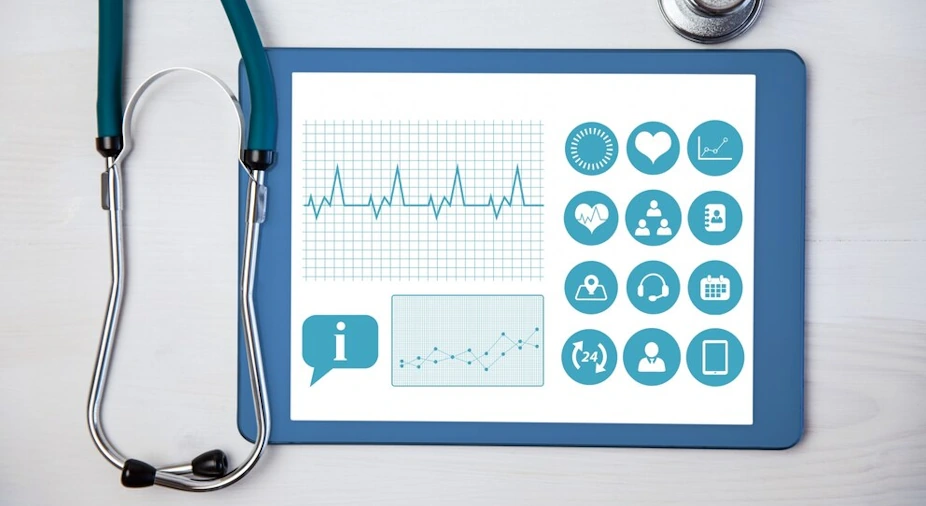Niraj Upadhyay
Founder – Trizone India,Co-Founder – Trizone Healthcare Consultants & director – AHMP India Foundation.
Why Communication Matters in Healthcare
Imagine walking into a hospital without knowing where to go, what to expect, or who to talk to. Confusing, right? Imagine a hospital where you receive clear, friendly guidance at every step. That’s the power of a good communication strategy—transforming patient care from stressful to seamless.
A well-planned messaging strategy in healthcare isn’t just about sharing information; it’s about creating trust, reducing anxiety, and improving outcomes. Effective communication makes all the difference, whether it’s a single hospital or a network of healthcare facilities.
The Key to Clear and Caring Communication
Healthcare communication ensures the right message reaches the right people at the right time. Here’s how hospitals can do it:
1. Before the Visit – Setting the Stage
- Easy-to-Navigate Website: Patients should find everything they need—services, doctor details, FAQs, and appointments—without frustration.
- Appointment Reminders: A simple text, email, or call to remind patients about their visit reduces missed appointments.
- Pre-Visit Prep: A quick explainer video or digital pamphlet can help patients know what to expect.
2. At the Hospital – A Smooth Experience
- Warm Welcome at Reception: A friendly face (or chatbot!) can set the right tone.
- Clear Signage & Directions: No one likes getting lost in a hospital maze, so clear, simple signs help.
- Doctor-Patient Conversations: Using simple language (no medical jargon) and actively listening makes a significant impact.
3. During Treatment & Stay – Keeping Patients and Families in the Loop
- Regular Updates: Nurses and doctors should check in frequently to ease concerns.
- Easy-to-understand Treatment Info: Explain medications and procedures using videos, simple handouts, or bedside screens.
- Feedback Kiosks & Surveys: A quick “How was your experience?” can help hospitals improve.
4. After the Visit – Keeping the Connection Alive
- Clear Discharge Instructions: Patients need easy-to-follow steps for recovery.
- Follow-Up Messages: A reminder about post-treatment care, upcoming check-ups, or wellness tips goes a long way.
- Support Groups & Online Communities: A place where patients can connect, share experiences, and feel supported.
The Secret Sauce: Techniques for Effective Healthcare Messaging
Want to make healthcare communication genuinely impactful? Here are five golden rules:
1. Keep It Simple
- Rewrite medical instructions in everyday language: Instead of saying “administer 500mg of paracetamol BID for pyrexia,” say “Take one paracetamol tablet (500mg) twice a day if you have a fever.”
- Use visual aids: A simple chart showing which medications to take in the morning, afternoon, or night can prevent errors.
- Create short explainer videos: A 30-second video explaining how to prepare for an MRI scan or what to expect during a blood test can reduce patient anxiety.
2. Be Empathetic
- Train staff to acknowledge patient emotions: Instead of a receptionist saying “You’ll have to wait,” they can say, “I understand waiting can be frustrating, but the doctor is finishing up with another patient. We’ll call you as soon as possible.”
- Use friendly and reassuring language in messages: Instead of “Your test results are available,” say, “Your test results are ready. Let’s review them together to ensure you get the best care.”
- Offer small comforts: Simple touches like a water station in the waiting area or a quiet corner for anxious patients can go a long way in improving their experience.
3. Consistency is Key
- Ensure all staff give the same instructions: Whether it’s the receptionist, nurse, or doctor, make sure everyone explains hospital policies (like discharge procedures or appointment scheduling) the same way.
- Standardize website, email, and printed materials: If your website says “Arrive 15 minutes early for your appointment,” your appointment reminder texts and front desk staff should say the same.
- Use a simple script for common patient interactions: Receptionists and nurses can use a standard response when answering FAQs, like “Yes, we offer teleconsultations. You can book one through our app or call us at this number.”
4. Encourage Two-Way Communication
- Add a “Questions?” Section to Patient Handouts: At the end of discharge instructions, add a line like “Not sure about your medications? Call us at this number!”
- Offer quick feedback options: A tablet or QR code at reception for patients to leave feedback on their visit can help improve services.
- Allow for open-ended questions: Doctors can ask, “Do you have any questions about your treatment?” instead of just, “Do you understand?” so patients feel comfortable speaking up.
5. Use Technology Smartly
- Use automated appointment reminders: A simple SMS or WhatsApp message saying “Reminder: Your appointment is tomorrow at 10 AM. Reply ‘1’ to confirm or ‘2’ to reschedule.” reduces no-shows.
- Have a basic chatbot on the website: Even a simple FAQ bot answering “What are your consultation hours?” or “How do I book an appointment?” can save patients time.
- Enable online access to lab results: Instead of making patients call or visit, send a secure link to their results with a note: “Your test results are ready. Click here to view them securely.”
- Offer teleconsultation options for minor follow-ups: Instead of requiring patients to come in for a routine check-up, a quick video call can save time and improve accessibility.
How Hospitals Benefit from Strong Communication
Whether it’s a single clinic or a big hospital chain, a great communication strategy brings big wins:
- More Trust, More Loyalty: Patients and families feel valued and return for future care.
- Better Patient Outcomes: Clear instructions mean better adherence to treatment plans.
- Less Chaos, More Efficiency: Automated reminders and follow-ups help the staff stay focused.
- More substantial Reputation: A hospital that communicates well becomes the go-to choice in the community.
- Fewer Risks, More Compliance: Transparency helps avoid confusion, legal issues, and unnecessary stress.
Healthcare facilities are not just about treatment but about relationships and trust. You enhance patient satisfaction, engagement, and brand loyalty by creatively integrating branding and advertising into internal communication touchpoints.
The next time a patient walks into your facility, ensure they leave feeling genuinely heard, effectively supported, and profoundly hopeful. This heartfelt connection is your strongest brand asset, transforming patients and families into loyal advocates and ensuring your brand leaves an unforgettable impression.

Connecting the Dots: Academic Conferences in the Healthcare Marketing Sphere
Connecting the Dots: Academic Conferences in the Healthcare Marketing Sphere Authors: Hardik...

Driving change, one cause at a time!
Cause-based marketing in healthcare is more than a trend—it’s a powerful tool to drive awareness, trust, and impact. Discover how campaigns like the ALS Ice Bucket Challenge, #NotAshamed, and Know Your Lemons became global movements with purpose.

Standing Out in the Crowd: Healthcare Branding Strategies for Lasting Impact
In today’s competitive healthcare landscape, branding isn’t optional—it’s essential. This blog explores powerful strategies to help hospitals and clinics stand out through UVP clarity, trust, technology, and community connection.

Transforming Medical Practice through 10000 hours: The Journey of a Doctor
Discover how a strategic 10,000-hour commitment can transform a doctor’s practice into a thriving healthcare brand. Amit Kumar Varma outlines a powerful roadmap that blends time investment, team consistency, and patient-centered care for sustainable success.

Connected Practices: Challenges and the Solution
India’s referral system is broken and outdated. Connected Practices powered by DocX offers a digital, efficient, and transparent solution for healthcare collaboration.

How to Choose the Right Digital Marketing Agency for Healthcare
Choosing the right digital marketing agency can make or break your healthcare brand. From defining clear ROI goals to evaluating healthcare-specific expertise, this guide walks you through every key factor you should consider. Whether you're a clinic, hospital, or individual practitioner, find the right partner to drive real results—ethically, strategically, and effectively.

